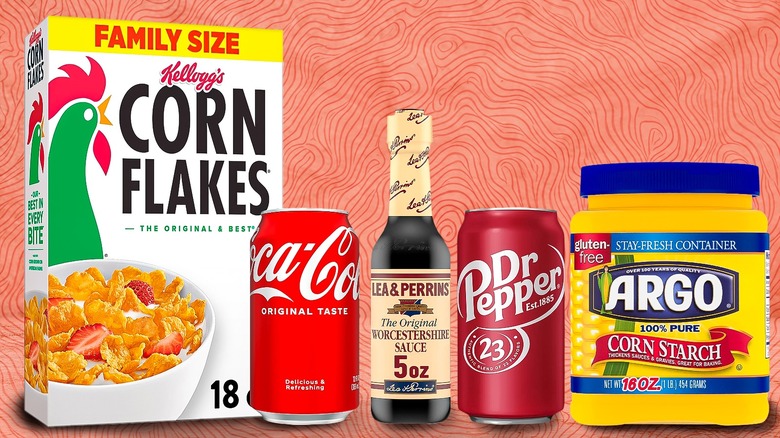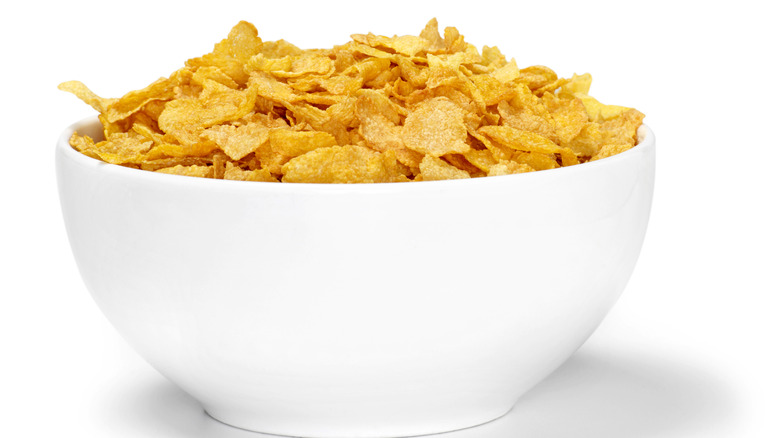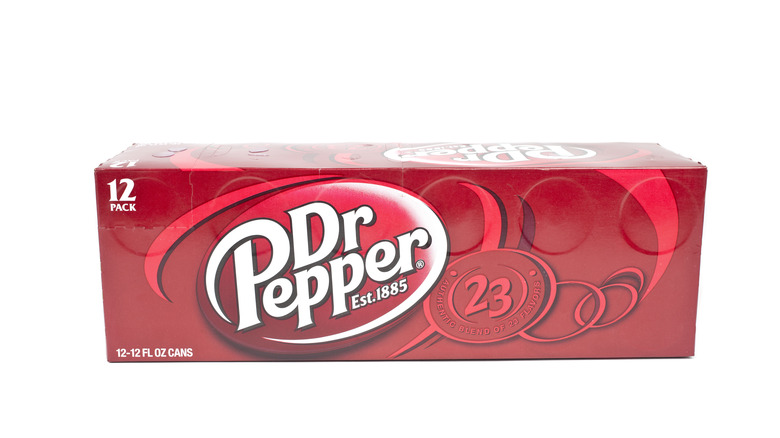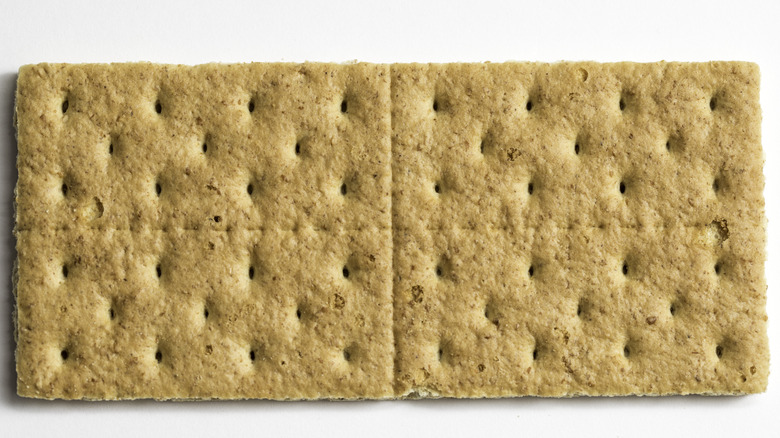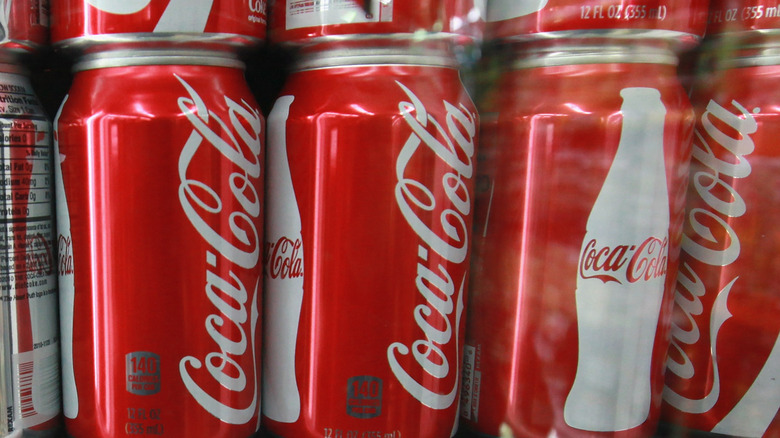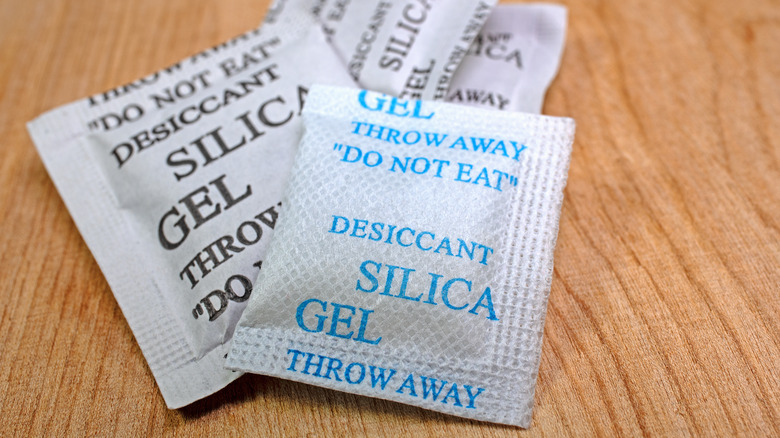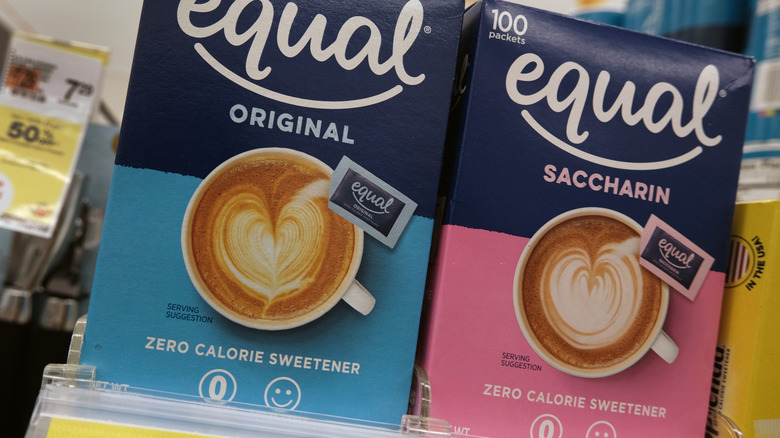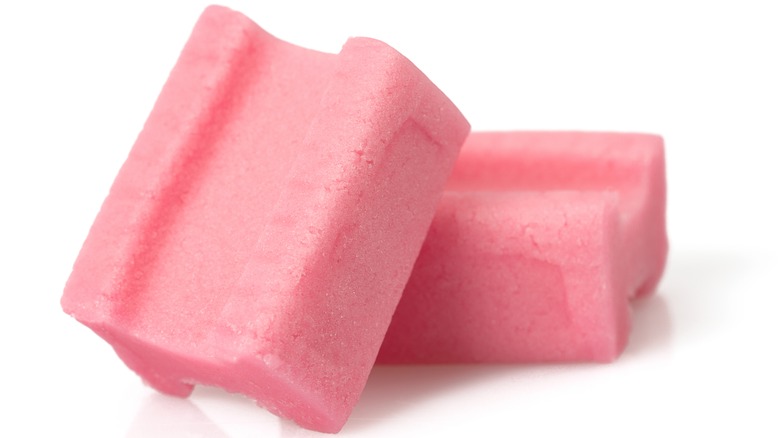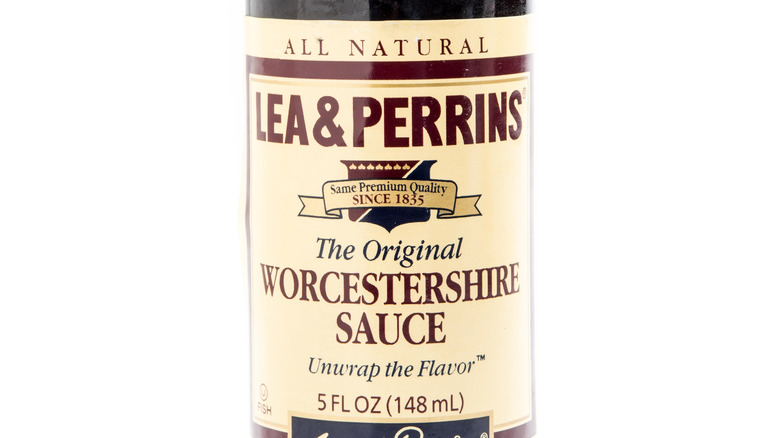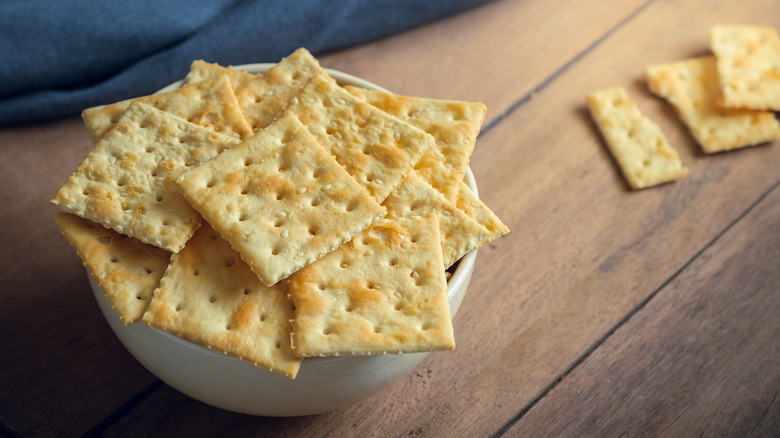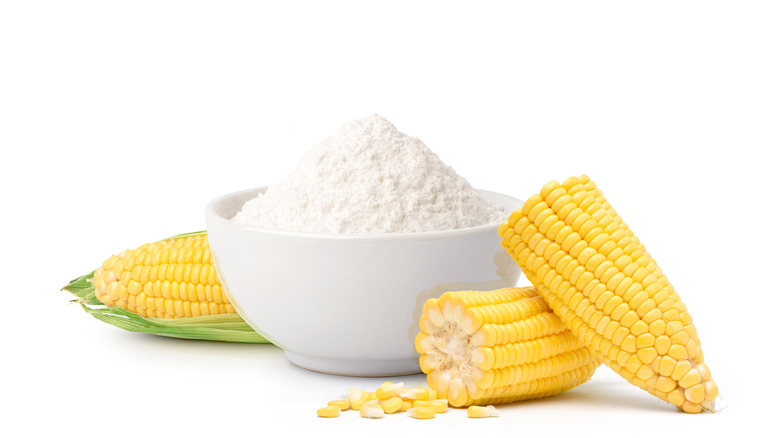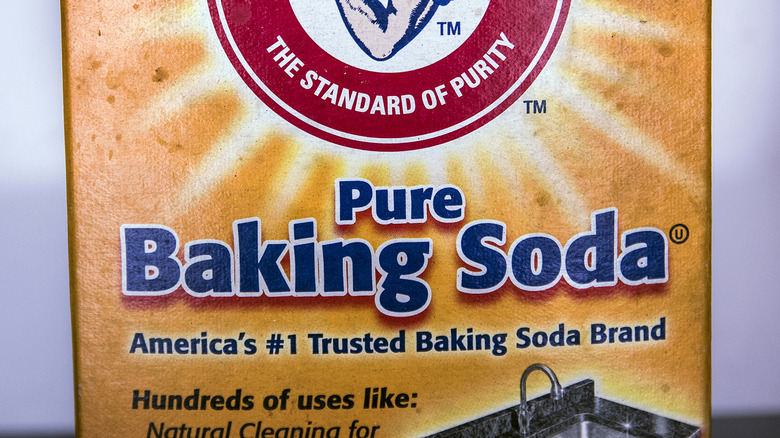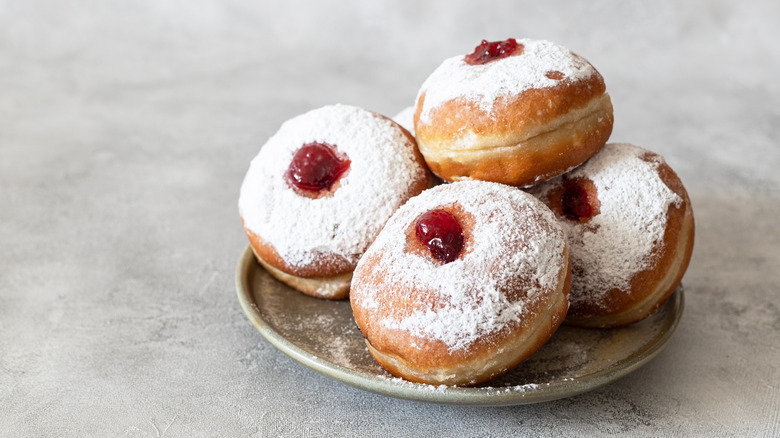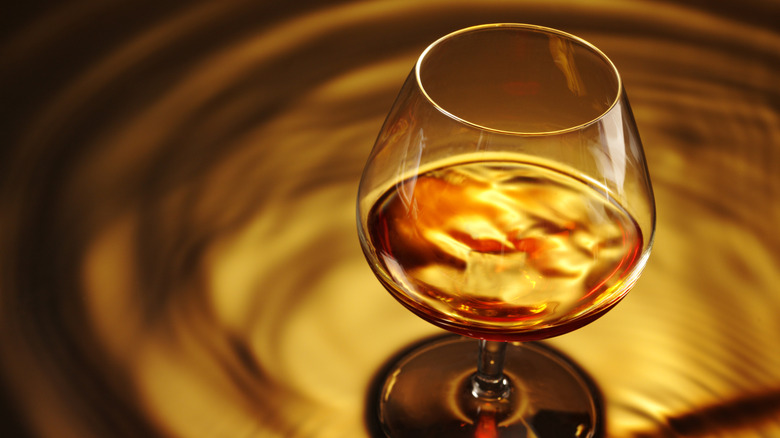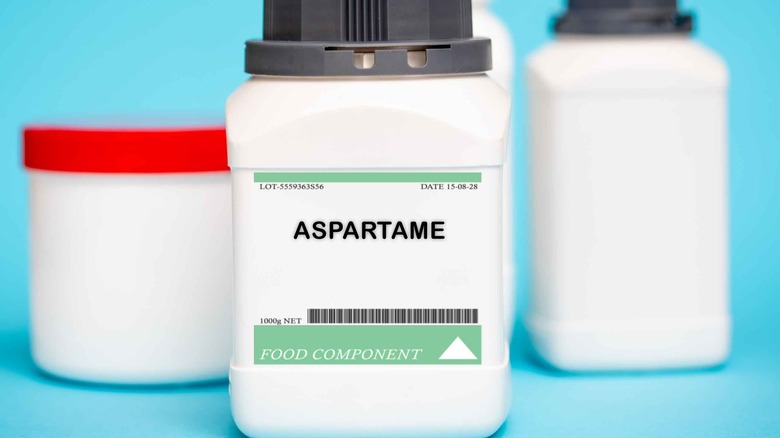15 Foods That Weren't Designed For What We Use Them For
As soon as a thing is born into the world, it begins to mutate, changing at a sometimes exponential pace, to the point where it might turn into something else entirely. Food, of course, is no exception. From humble beginnings as medicinal aids or as items that were not even destined for human consumption, these foods have undergone a real metamorphosis.
Take the supposedly innocent graham cracker, for instance. You would never know it to look at it, but it was invented to help people become masters of their own domain, if you catch our drift, while today it is primarily used by children, of all people, to hold together their s'mores. Similarly, Worcestershire sauce originally came together as an attempt to mimic an Indian condiment, whose true identity we may never know, but after a happy accidental fermentation, it became the umami goo we know and love today. So let us embark on a culinary journey to unravel the stories of foods (or even non-foods) that have strayed from their original purposes and onto (or in some cases off) our plates.
1. Corn Flakes
Dr. John Harvey Kellogg, who invented Corn Flakes with his brother William, did not care for sin, excess, or meat. Out of this Puritan spirit was born the desire to give Americans a breakfast food that did not involve these unholy elements, because at the time — the turn of the 20th century — such options were in short supply. As Dr. Kellogg observed the national propensity to indulge in large breakfasts complete with beef steaks, pastries, and boiled chickens, followed by a tendency to develop indigestion, he resolved to provide a simple, bland food product that he theorized could help Americans with their tummy troubles.
This food, which he marketed as a health food, was Corn Flakes. But these babies weren't just meant to promote a healthier lifestyle. They were also supposed to help people guard against carnal desires like wanton sex and masturbation. While Dr. Kellogg may have been ahead of his time in promoting a healthier diet with more plants and less meat, aided by the consumption of Corn Flakes, his science-based theories went way off track when he suggested the cereal could also help us keep it in our pants. Whatever benefits Corn Flakes may or may not have, they're a decent and useful breakfast food, so perhaps it all worked out for the best.
2. Dr Pepper
Dr Pepper, a beloved and distinctive soda, emerged from the creative mind of pharmacist Charles Alderton in Waco, Texas, during the 1880s. Alderton, employed at Morrison's Old Corner Drug Store, sought to concoct a unique beverage to delight the taste buds of his patrons. His experimentation with various fruit-flavored syrups led to the creation of a drink that blended 23 different flavors, a closely guarded secret to this day. Interestingly, Dr Pepper was not initially envisioned as a carbonated beverage but rather as a syrup to be mixed with carbonated water at the soda fountain.
The unique flavor profile, characterized by a medley of spices and fruits, garnered a devoted local following. Eventually, the beverage's popularity prompted the establishment of the Dr Pepper Company in the 1890s in order to cater to the rising demand for the drink. Dr Pepper's transformation from a concoction designed for the soda fountain into a bottled soda reflects the serendipitous nature of culinary innovation, where an unexpected twist in a pharmacist's experiment led to the creation of an enduring and beloved beverage.
3. Graham crackers
You may be surprised to find that graham crackers have health food origins. Originally conceived by Reverend Sylvester Graham in the early 19th century, they were envisioned as a wholesome, unadulterated food designed to promote good health and moral behavior. Graham, a Presbyterian minister, believed that a diet consisting of simple, unprocessed foods would curb sinful desires, particularly of the carnal variety.
The original graham cracker was a far cry from the slightly sweet, cinnamon-infused snack we know today. Graham's version was a dense, unleavened bread made from coarsely ground whole wheat flour, devoid of sugar and refined additives. A nunnery incarnate, if you will. Lucky for us, over time, the crackers underwent a notable transformation, to the point where in 1931, Nabisco came out with a version of a graham cracker that included cinnamon, sugar, and all the trappings we know and love today. Thus the graham cracker, once a symbol of dietary restraint, morphed into a versatile and beloved snack that strayed far from its austere origins.
4. Coca-Cola
If you've ever noticed the resemblance between the name of this beverage and the famous Schedule II drug under the Controlled Substance Act, you'd be onto something. Indeed, the original version of Coca-Cola, which dates back to 1886, did contain traces of cocaine in the form of coca leaf extract, a key ingredient in the recipe. Through this drink, the cocaine lent its stimulant properties to consumers, who believed, at the time, they were imbibing a medicinal tonic for headaches and fatigue.
However, in 1929, due to a growing awareness of the dangers of cocaine, the formula was modified to eliminate all traces of psychoactive elements. As the 20th century progressed, Coca-Cola underwent a profound metamorphosis. Recognizing the appeal of its distinctive flavor, the company shifted its marketing strategy, repositioning the beverage as a refreshing and enjoyable soda rather than a medicinal elixir. The introduction of the iconic contour bottle in 1916 also helped solidify Coca-Cola's image as a mainstream soft drink.
5. Silica gel
Although not a food, silica gel is often used in food packaging in order to wick away any potential moisture. Before that activity, it lived many lives. It first came to be in 1640, when it had no apparent use but was seen as a mere curiosity. Then, during WWI, it was placed into gas mask canisters in order to absorb the moisture that inevitably developed as the person wearing the mask breathed.
Its usefulness thus proven, silica gel was patented in 1919 and mass production was launched for use as a desiccant to control humidity during the transportation of goods. Initially conceived for industrial applications, silica gel quickly proved its worth in preserving the quality of various products by preventing moisture-induced damage. Its early adoption included safeguarding pharmaceuticals and military equipment, showcasing its efficacy in maintaining the integrity of sensitive materials. Over the decades, the tiny, porous beads found new roles in preserving consumer goods, including by enhancing the shelf life of packaged food. Indeed, if you find a little white packet in your box of dried fruit or beef jerky, for example, that's silica gel. Don't eat it, as you might possibly choke on it, but if you manage to swallow it unscathed, you shouldn't worry about it too much, as it's not toxic, according to WebMD.
6. Saccharin
Saccharin, an artificial sweetener discovered in 1879 by Constantine Fahlberg, a chemist working at Johns Hopkins University, evolved from a laboratory discovery to a widely used sugar substitute. Initially, Fahlberg stumbled upon saccharin while researching coal tar derivatives. Against all good advice, he licked some lab residue off his fingers and found that it was sweet, leading to the development of saccharin as a sugar alternative. Saccharin gained popularity in the early 20th century, particularly during sugar shortages in both World Wars when it was used as a sugar substitute. However, its fame soared during the mid-20th century as a dietetic aid for weight control, becoming a key ingredient in various low-calorie and sugar-free products.
Despite being met with controversies and health concerns, including studies suggesting a link between artificial sweeteners and cancer, the substance has continued to evolve. Nowadays, it's commonly found in sweet processed foods that market themselves as low-calorie, like certain fruit juices and candies.
7. Chewing gum
Gum seems like a thoroughly modern phenomenon, or at least like something that was big in the 80s. But in truth, it's been around -– in one form or another — since at least the times of the ancient Mayans, who were known to chew on various natural substances for enjoyment and potential health benefits, including one called chicle, derived from the sapodilla tree.
This went on for many years until the 1860s when New York-based inventor Thomas Adams stumbled upon this chicle and attempted to make something commercial out of it. He initially intended to use it as a substitute for rubber, but when that didn't work out, he opted for chewing gum instead, which until then had been made rather unsuccessfully with spruce tree resin. Adams added flavorings to his chicle version and created the first commercially successful chewing gum. The gum gained even wider recognition after it was added to soldiers' rations during WWII, as a morale booster. In recent decades the applications of gum have further expanded to include stress relief, oral hygiene, and caffeine or nicotine fixes.
8. Popsicles
Everything is refreshing about popsicles, including the way in which they were accidentally invented. As the story goes, on a very cold day in 1905, little Frank Epperson was mixing soda powder with water out on his porch when he was suddenly called to dinner by his mother. Or perhaps it was bed. The point is, he forgot his concoction outside overnight only to find it frozen solid the next morning. Luckily, the stick he'd been using to stir it was still stuck in the ice, and when he pulled it out, the popsicle came with it, revealing a glorious new invention.
But little Frank Epperson was no fool, so he named the icy treat after himself, calling it an "eppsicle." Only many years later, after patenting his invention and selling it on a wider scale than what he could produce alone on his porch, his children urged him to change the name to "popsicle." That is a combination of the words "pop's" and "sicle," so in a way, the popsicle was still named after him.
9. Worcestershire sauce
This tasty condiment with a complex flavor profile owes its origin to a fortuitous experiment carried out in the early 19th century by chemists John Lea and William Perrins of Worcester, England. When the British governor of Bengal came to them and asked them to recreate a recipe he'd brought back from India, they obliged and made an extra bottle for themselves. They were unimpressed with the flavor, but did not throw away the mixture -– instead, they put it out of sight and out of mind until some time later, whereupon they found that it had vastly improved in flavor after fermentation.
The timing of this invention was just as fortuitous as its method of creation. Many people alive today remember a time when British food was soul-crushingly bland, as was the case back in the 1800s. But with the unique tang and delicious umami of Worcestershire sauce, meat and other foods could suddenly and effortlessly gain flavor. The sauce also helped to tenderize such horrors as boiled or overcooked meat.
10. Soda crackers
Soda crackers, also known as saltines, began life at the turn of the 19th century as nothing but a mixture of flour and water put together by a baker in Massachusetts. Unburdened with perishable ingredients, these crackers were popular among sailors, who could take them away to sea for months on end without fearing that they would go bad.
Decades later, another baker, this time in Missouri, decided to add baking soda to the recipe to make the crackers thicker. The product was then renamed soda cracker and was sold commercially by F.L. Sommer & Company, of St. Joseph, Missouri. The light, crispy texture yielded by the addition of baking soda turned out to be hugely popular, even beyond the seafaring community, and soda crackers became a pantry staple among ordinary Americans. It was during this time that the humble saltine transformed from a digestive aid and simple accompaniment for sailors at sea into a household staple used as a base for appetizers, cheese pairings, and to add crunch to various recipes.
11. Cornstarch
Various types of starch have long been used to clean clothes, so when American inventor Thomas Kingsford developed a method for extracting starch from corn in the 1840s, his first thought was to apply it to laundry. But by the 1850s it became clear that cornstarch was an ideal thickening agent in the kitchen.
The substance soon became a popular alternative to traditional thickeners like flour, which could be a bit unwieldy. Its neutral taste and ability to create smooth textures in sauces, gravies, and desserts propelled its culinary appeal. Beyond its thickening capabilities, cornstarch found applications in baking, where it became a key component in recipes for cookies, cakes, and other confections. More recently, its gluten-free nature has made it a preferred choice for those with certain dietary restrictions. Many recipes that call for small amounts of flour can easily be made with cornstarch instead, keeping them gluten-free.
12. Baking soda
Before there was baking soda, or baking powder for that matter, bread and cake makers had to resort to the use of yeast to make their creations rise. While yeast remains popular today, baking soda is much more ubiquitous and tends to be a bit more predictable in its behavior. Indeed, this predictability helped make baking a much easier task once baking soda was introduced on a commercial scale in the 1840s. Although this ingredient still required acidic additives like vinegar or buttermilk in order to work properly, it was still a step up.
But baking soda soon went above and beyond its application as a leavening agent. It found use as a household cleaner owing to its abrasive nature and deodorizing properties. Its effectiveness in extinguishing small fires led to its inclusion in fire extinguishers, highlighting its unexpected role in safety. In the realm of personal care, baking soda became a popular ingredient in toothpaste and even medicinal use, such as alleviating heartburn and soothing skin irritations.
13. Powdered sugar
Sugar has been around for millennia -– whether humans knew about it or not. It is derived from plants, after all, particularly the sugar cane. But powdered sugar is another story. In fact, its advent can be traced back to the ancient Arabs who developed a method for refining and making powdered sugar, which became popular in Europe starting in the 1200s, for those who could afford it.
Mass production and greater affordability didn't occur until the 19th century, with advancements in sugar processing technology. The convenience of this finely ground sugar revolutionized baking and pastry making, as it could easily dissolve into batters and icings, creating a smoother texture. But further uses for powdered sugar soon gained traction. Its super-fine texture gave it useful pharmaceutical applications, and it now acts as a coating for many pills, protecting them from air and moisture and making them easier for people to swallow.
14. Brandy
Brandy, as we know it today, is an alcoholic beverage consumed for our enjoyment and entertainment, broadly speaking. But this wasn't always the case. Initially crafted for medicinal purposes back in the 1300s, brandy was used as a liquid believed to grant cardiac stimulation while at the same time, somehow, also acting as a sedative.
When it became clear that it was impossible to reconcile these two opposing suppositions, brandy moved from the realm of the medicinal to that of alcohol and spirits, where it always belonged. The aging process in wooden barrels became a defining characteristic, imparting complex flavors and aromas. Brandy also became a symbol of luxury and refinement often associated with celebratory toasts and special occasions. Beyond being a standalone spirit, brandy found its way into cocktails and culinary applications. From the classic Brandy Alexander to rich sauces and desserts, its versatility in the kitchen — as well as the myriad different types of brandy — showcases its journey from a baffling medicinal concoction to a globally cherished libation.
15. Aspartame
This artificial sweetener emerged from the laboratory of one James M. Schlatter in 1965. Schlatter accidentally discovered its sweet taste while working on an anti-ulcer drug. A compound he was synthesizing got on his fingers and he tasted it, as you do in a lab full of potentially toxic and definitely mysterious substances. Luckily for him, this particular substance didn't turn out to be immediately deadly, though the jury is still out on whether aspartame is possibly carcinogenic and can lead to other ailments.
Whatever the case, it was approved as a sweetener by the U.S. Food and Drug Administration in 1974, effectively ending its career as an anti-ulcer drug and solidifying its place in the world of foodstuffs. Aspartame is approximately 200 times sweeter than sucrose, making it an attractive option for those looking to reduce calorie intake and manage diabetes. Aspartame has now found its way into a myriad of products, including diet sodas, sugar-free desserts, and chewing gum, offering consumers a guilt-free way to enjoy sweetness — aside from that possible cancer risk.
